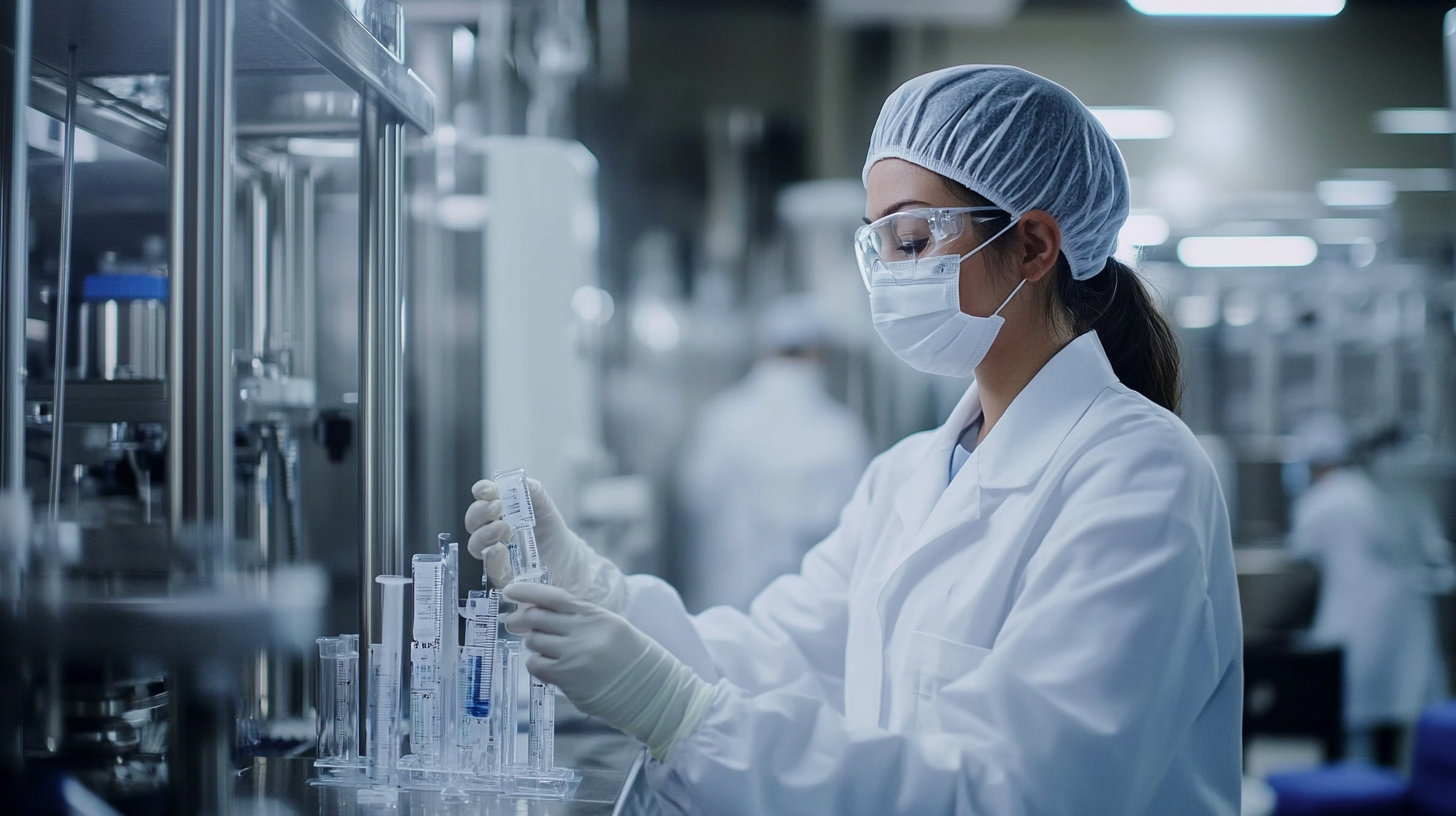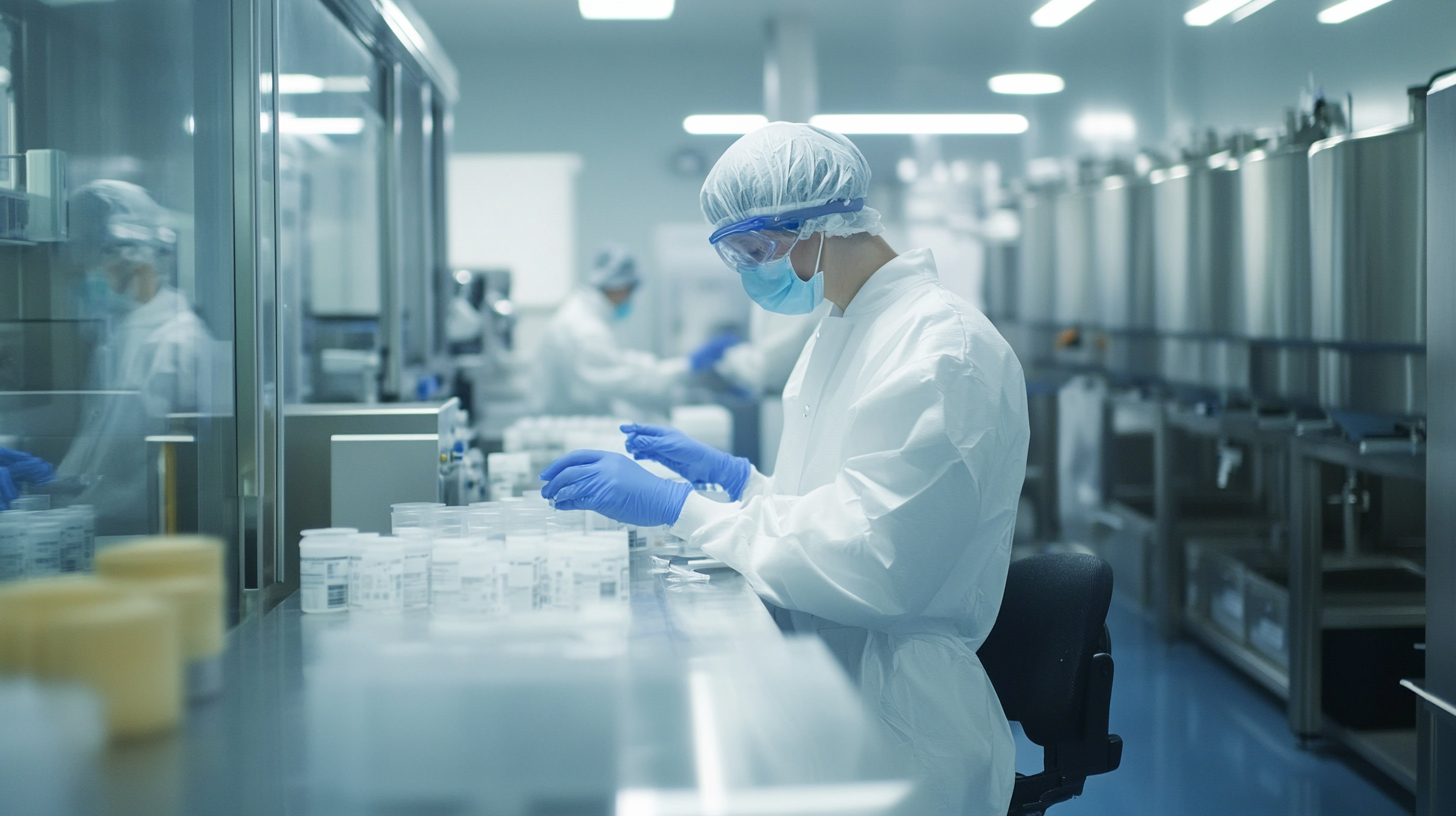The Vaccine Development Process is a complex and multifaceted journey that involves rigorous research, testing, and collaboration among various stakeholders. According to a report by the World Health Organization, the average vaccine takes 10 to 15 years to develop, with only 6% of candidate vaccines eventually making it to market in a successful manner. As the demand for vaccines continues to rise—evidenced by the urgent global response to the COVID-19 pandemic—understanding this process is crucial for stakeholders from researchers to manufacturers.
Navigating the intricacies of the Vaccine Development Process requires not only scientific expertise but also strategic sourcing of quality suppliers who can meet the stringent regulatory standards. The Market Research Future report indicates that the global vaccine market is anticipated to reach USD 65.4 billion by 2027, highlighting the importance of engaging reliable partners throughout the development cycle. This guide aims to unravel the complexities of supplier sourcing within this critical context, ensuring that your vaccine initiatives are both efficient and compliant.

The vaccine development lifecycle is a complex process that involves several critical stages, each essential for ensuring the safety and efficacy of the final product. The journey begins with basic research, where scientists explore pathogens and identify potential vaccine candidates. This foundational stage is crucial as it lays the groundwork for the subsequent phases by providing a thorough understanding of the disease mechanisms and the immune responses required for protection. Next comes preclinical testing, where the selected vaccine candidates are rigorously tested in laboratory settings and animal models. This phase aims to assess the safety profile and immunogenicity of the vaccine. Positive results lead to the initiation of clinical trials, which are divided into three phases: Phase I focuses on safety and dosage in a small group of healthy volunteers, Phase II expands the study to a larger population to evaluate the vaccine's efficacy and side effects, while Phase III involves thousands of participants to confirm its effectiveness and monitor for adverse reactions. Once a vaccine successfully passes through these rigorous trials, the process shifts to regulatory approval. This involves submitting detailed data to health authorities, who review the findings before granting permission for public use. Post-marketing surveillance is the final stage, where ongoing monitoring of the vaccine's performance in the general population occurs to ensure that any long-term effects are identified and addressed. Understanding each step of this lifecycle is crucial for stakeholders in the vaccine development process, ensuring that quality suppliers are sourced to uphold the highest standards throughout this critical endeavor.

When sourcing quality suppliers in vaccine development, understanding the regulatory landscape is crucial. In the realm of decentralized clinical trials (DCT), which emphasizes a patient-centric approach, the role of compliant suppliers becomes even more pronounced. These suppliers should not only meet rigorous safety and efficacy standards but also be adept at navigating the unique challenges that DCTs present.
One of the key aspects to look for in quality suppliers is their familiarity with the decentralized model. Suppliers must have the capability to integrate technology that supports remote monitoring, data collection, and patient engagement. This ensures that the trials are conducted efficiently without compromising on data integrity or patient safety. As the industry shifts towards more flexible testing environments, suppliers who demonstrate agility and innovation will stand out.
Furthermore, transparency in operations and compliance with local and international regulations are non-negotiable criteria when evaluating potential suppliers. It is essential to confirm that they possess the appropriate certifications and adhere to best practices in clinical trial management. By prioritizing these factors, developers can build a robust supply chain that enhances the chances of successful vaccine development while maintaining high-quality standards.

When it comes to vaccine development, the selection of quality suppliers is paramount. Assessing supplier credentials is not just a matter of ensuring that they can meet your specific needs; it is a vital step in compliance with industry standards and regulatory requirements. The first key aspect to consider is the supplier’s history and reputation in the field. A supplier with a proven track record in vaccine development demonstrates experience and reliability, which are crucial in a process where precision and safety are non-negotiable.
Another critical factor is the supplier’s certification status and compliance with Good Manufacturing Practices (GMP). The supplier should provide documented evidence of adherence to GMP, as this ensures that the processes used in manufacturing vaccines are efficient and meet safety standards. Moreover, certifications such as ISO or other relevant quality assurance standards can serve as an added layer of assurance for the buyer. Engaging with suppliers who prioritize quality assurance instills confidence in the entire vaccine development process, reducing the risk of delays or compliance issues that can arise later.
Lastly, it is essential to conduct regular audits and reviews of suppliers to ensure they continue to meet required standards. Open lines of communication regarding any changes in processes, ingredients, or capabilities are vital to maintain compliance and uphold the integrity of the vaccine. By investing time in thoroughly vetting suppliers based on these criteria, vaccine developers can navigate the complexities of sourcing effectively while ensuring that every component of their product meets the highest standards of safety and efficacy.

Building strong partnerships with suppliers is crucial for navigating the intricate vaccine development process. In today’s volatile global environment, supply chain collaboration has proven to be a significant asset for companies aiming to enhance resilience and manage risks effectively. By fostering open communication and aligning objectives, businesses can ensure they are not only prepared for potential disruptions but also positioned to seize new opportunities as they arise.
Collaboration strategies involve creating strategic alliances that allow companies to leverage each other’s strengths while maintaining their independence. For instance, a pharmaceutical firm might partner with a raw material supplier to streamline sourcing processes, ensuring that high-quality ingredients are readily available for vaccine production. Such alliances enable companies to innovate and adapt more swiftly to market changes, ultimately improving their responsiveness to public health needs.
Engaging with public health partners is another critical aspect of building robust supplier relationships. Collaborating with government agencies, research institutions, and non-profit organizations can enhance the credibility and effectiveness of a vaccine development initiative. These partnerships provide access to valuable resources, expert insights, and community networks, fostering a comprehensive approach to public health challenges. By prioritizing partnership building, companies can navigate the complexities of vaccine development while contributing positively to societal well-being.
When it comes to sourcing quality suppliers in the vaccine development process, understanding regulatory requirements is pivotal. Different countries have distinct regulatory bodies, such as the FDA in the United States or the EMA in Europe, each with specific guidelines that must be adhered to. These regulations dictate everything from the manufacturing processes to quality assurance protocols, ensuring that suppliers meet the highest safety and efficacy standards. Therefore, it’s essential for developers to familiarize themselves with these guidelines to avoid delays and potential compliance issues.
Establishing a robust supplier sourcing strategy begins with thorough research into the suppliers’ certifications and past compliance records. This can involve reviewing documentation, such as Good Manufacturing Practice (GMP) certifications, and assessing their ability to meet stringent regulatory requirements. Engaging in direct communication with potential suppliers can further clarify their understanding of local and international regulations, and how they implement these standards in their operations. Ensuring that suppliers are proactive in their approach to regulatory compliance not only mitigates risk but also fosters a collaborative partnership that can adapt to changing regulations.
Moreover, utilizing technology and data analytics can streamline the supplier evaluation process. By employing software solutions that monitor supplier performance and compliance in real-time, developers can quickly identify potential red flags and ensure ongoing compliance with regulatory requirements. This proactive approach not only enhances supplier relationships but also contributes significantly to the overall success of the vaccine development project, paving the way for timely advancements in public health initiatives.
